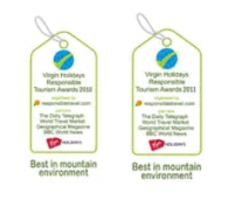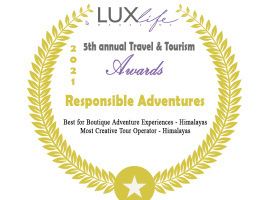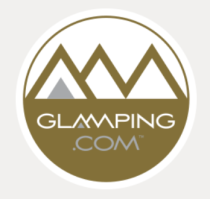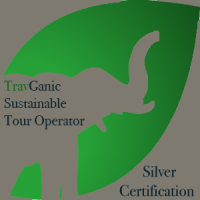Trekking in Nepal in June
June is part of Nepal’s short summer before the monsoon season occurs from the second to the third week of this month. You can expect the daytime temperatures to be hot below 1500 meters, warm up to 2500 meters, and warm/cool above 2500 meters. You can do most treks during June; choosing higher altitude treks for cooler temperatures is advised. This is ideal for the Upper Dolpo Circuit, Upper Dolpo Traverse, or Upper Mustang, as these regions are in the rain shadow.
As always – it pays to invest in proper equipment such as a suitable down jacket (if you are trekking at a high altitude), sleeping bag, a couple of layers of fleece, right thermal underwear, thick hiking socks, gloves, trekking pants, warm hats to name a few necessary gears to invest in. It is always better to have more than less.
It is good to dress up in layers, which you can ‘peel’ one at a time when you start to warm/heat up as you begin trekking.
Benefits of Trekking in Nepal Himalaya during June.
This is the spring season, and flowers bloom in the middle hills of Nepal. Rhododendron forests can be very colourful with white, pink, and crimson red (Nepal’s national flower) flowers in bloom, Magnolias and wild orchids, to name a few. However, the clouds can begin to form in the latter part of the day, and it can start raining at the lower altitude and snow in the higher elevations during the late afternoon or evening. This is a good thing as it can clear the clouds and clear the clouds for excellent mountain views the following day.
- There will still be fewer trekkers on the trail and lodges if you go trekking during February to the popular trekking areas where there are lodges.
- You will be warm to hot while hiking during the daytime.
- You could be the only trekker in the lodge.
- For the same reason, the wifi works better in the hostels as fewer people log in.
- You can use the internet better for weather forecasts and temperatures.
- There will be fewer people queuing for hot showers.
- The flowers will be blooming at altitudes above 4500 meters.
Can I do a high-altitude trek in Nepal during June?
You can undoubtedly do a high-altitude trek in Nepal during June. This is a better time to do a high-altitude trek than February or March. This is because we receive some monthly precipitation for a few days. We receive more massive snowfalls during February and March.
Dangers/Inconveniences of trekking in Nepal during June.
- Most of the lodges should be open.
- Not all food on the menu will be available.
- There could be very windy conditions in the higher elevations, be prepared.
- The monsoon season might start while you are trekking.
- The leeches might start coming out below 2400 meters if it rains.
- It can be hot and humid in lower elevation areas.
- Insects in the lower altitude areas can bite you – bring suitable insecticide.
- June is still early, but the monsoon rains could disrupt domestic flights to or from Short take-off and landing strips (STOL) airports like Lukla, Jomsom, and Juphal. In addition, landslides can block roads causing delays in your holiday program (the 3rd week of June is an early monsoon, unlikely for landslides, but one never knows).
June 2022 – There has been high rainfall even before the monsoon clouds hit Nepal.
June 2021 – The monsoon took place on time, but it dumped a lot of rain from the 11th of June, causing huge floods and landslides and causing massive damage at the beginning of the monsoon season. Rainfall was 25 % heavier this year compared to the previous years.
June 2020 – The first weekend of this month experienced rain in the low to middle hills and snow in higher elevations. It was caused by Cyclone Nisarga, which nearly missed Mumbai on the 3rd of June. The monsoon started on the 15th of June this year.
The first three weeks of June 2019 experienced some pre-monsoon rain throughout Nepal. The monsoon was ‘late’ by about ten days and arrived on the 20th of June. The monsoon’s arrival was still weak until the end of the month.
June 2018 received more rain than usual in the first two weeks, and there was very little precipitation for the second half when the monsoon should have started.
Trekking regions that are in the Rainshadow areas:
You will be visiting one of the scenic trekking trails in the monsoon season in Nepal. Once an independent Kingdom that was later annexed into Nepal’s territory, Upper Mustang is one of the restricted trekking destinations in Nepal that requires a special permit and to be booked with a tour operator. Back Packers are not allowed to trek here—the Buddhists who were once followers of the Bon religion inhabit the upper Mustang predominantly. Upper Mustang is a high-altitude desert. During the monsoon season, you will witness the rivers’ increased water levels, including the holy and mighty Kali Gandaki River.
This trekking destination takes you to one of the most remote regions in Nepal. The followers of the Bon religion, followed by Buddhists and Hindus, mainly inhabit it. The locals’ terrain, culture, and traditions are very close to the Tibetan way of life. The trekking trail partly lies in the Shey Phoksundo National Park, Nepal’s most extensive National Park. It is the only National Park in the trans-Himalaya region. The beauty of this region is unparalleled to other trekking destinations. Upper Dolpo doesn’t receive continuous rainfall in the rain shadow region. Trek here for the unique culture, landscape, scenery, and biodiversity.
Jomsom to Muktinath Trek – email us for the itinerary.
This trekking destination is more popular as a pilgrimage that is suitable during the monsoon season in Nepal. Muktinath attracts both Hindus and Buddhists alike for pilgrimage. Thus, you may embark on a spiritual or adventurous trek to this area, which remains dry most of the year, except in the winter when the region is covered by snow. Besides the holy Muktinath Temple, Kagbeni is the other popularly travelled destination in this region.
Check out our Trekking packages for Nepal, Bhutan, India, and Tibet.
















